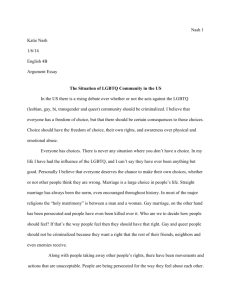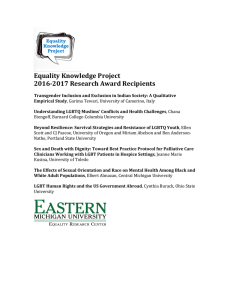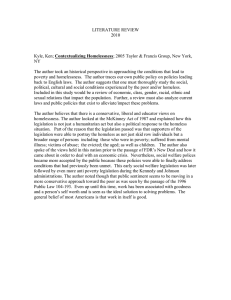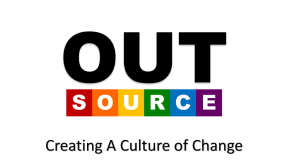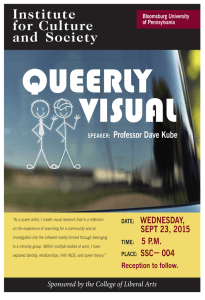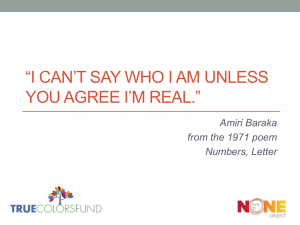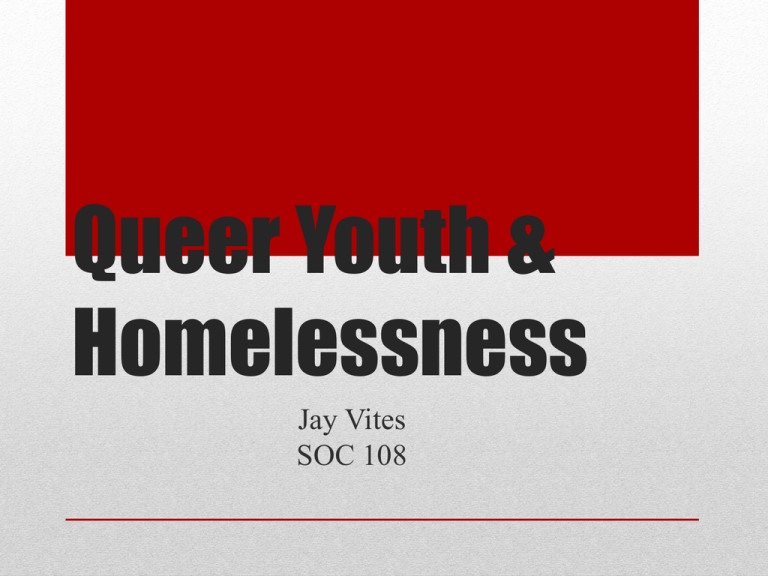
Queer Youth &
Homelessness
Jay Vites
SOC 108
• In the United States, “over a million youth (5%)” experience
homelessness annually (Rosario et al 2012).
• Studies have found that LGB youth compose 15–36% of
homeless youth, although they compose only 1.3–3.8% of
the general youth population (Rosario et al 2012).
• The average percentage of homeless youth who identify as
lesbian, gay, bisexual, transgender, and questioning/queer
(LGBTQ) is approximately 20% (Van Leeuwen et al 2006).
How it affects LGBTQ people:
• Homelessness is associated with subsequent symptoms of
anxiety, depression, conduct problems, and substance abuse
(Rosario et al 2012)
• Youth homelessness leads to public health issues, such as sexual
victimization, youth prostitution, and the spread of HIV (Nolan
2006).
• Homeless youth reported experiencing high levels of physical
and sexual abuse, pervasive mental illness, and high rates of
engaging in risky sexual behavior (Van Leeuwen et al 2006).
• LGBTQ youth are at greater risk for substance abuse and
suicide, and they are at high risk for being both victims and
perpetrators of physical violence compared to the general
adolescent population (Van Leeuwen et al 2006).
Trans
Homelessness
• Transgender youth especially are affected by homelessness
situations, and find difficulty locating shelters that accept
them.
• “Within social service environments, they were often told
implicitly or explicitly that they "do not belong'. The
presence of trans women within these spaces seemed to
challenge the underlying assumption of a 'normative'
homeless woman” (Sakamoto et al 2009).
• Much of the literature on trans people and housing is
couched with reference to broader LGBTQ communities, in
which the experiences of trans people largely remain
invisible (Sakamoto et al 2009).
Why does it matter?
• With rampant overrepresentation
of LGBTQ people in the homeless
population, they face even more
difficulties, stigma, and oppression
than non-homeless LGBTQ.
• Queer youth are especially at-risk
due to unsupportive families,
abusive home situations, and lack
of proper resources, such as school
counselors LGBTQ outreach
programs, and queer-friendly
shelters.
What can we do?
To ease the situation of a growing queer homeless youth
population, we can do several things:
• Encourage shelters to accept gender nonconforming
youth
• Petition universities and colleges to open LGBTQ student
resource centers on campus
• There are fewer than 150 offices devoted to LGBT student
services out of the over 2,000 postsecondary institutions in
the United States (Fine 2012).
• Open your home to queer youth who have been kicked
out; help develop a network of safe housing for queer
youth
• Bring awareness to the public


